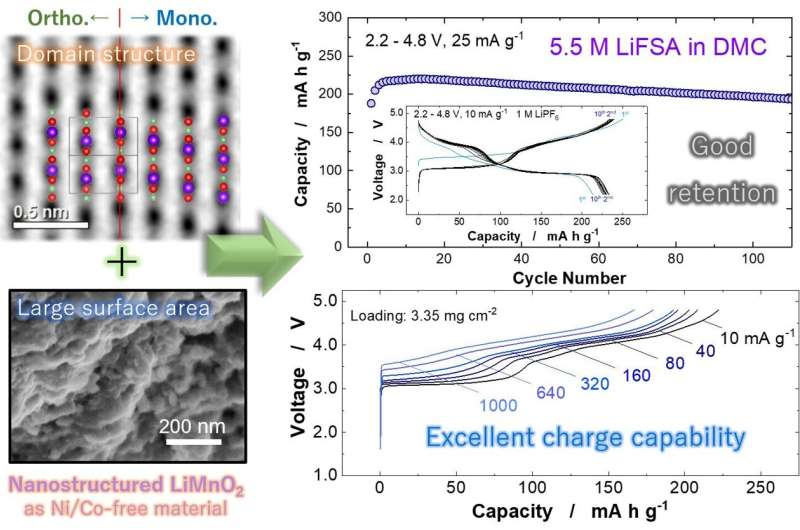Manganese-based lithium-ion batteries could match the performance of current nickel and cobalt-based options while offering a more sustainable alternative.

Lithium-ion (Li-ion) batteries are integral to the rechargeable battery market, particularly as electric vehicles (EVs) become more widespread. Current EV batteries primarily rely on nickel (Ni) and cobalt (Co), which can be costly and may not meet the long-term demands of a growing EV market. Researchers are exploring manganese (Mn) as a more sustainable and cost-effective alternative for battery production. In a recent study published in ACS Central Science on August 26, 2024, researchers propose using a lithium/manganese-based material for the positive electrode in Li-ion batteries. This approach aims to match the performance of Ni/Co-based materials while reducing costs and enhancing sustainability.
Although established in the electronics industry, Li-ion batteries still present opportunities for innovation. LiMnO2, a manganese-based electrode material, has been considered before but was limited by its performance. The study explores various LiMnO2 polymorphs, discovering that a monoclinic layered structure enables a transition to a spinel-like phase, which is crucial for improving electrode performance. The research team, led by Naoaki Yabuuchi, successfully synthesised nanostructured LiMnO2 with a monoclinic layered domain through a straightforward solid-state reaction.
Monoclinic Structure Unlocks High-Performance
The monoclinic structure, a specific crystalline symmetry, makes LiMnO2 a viable electrode material. Without the structural phase transition enabled by the monoclinic domain, the material’s performance would be constrained by its crystalline structure. After testing different polymorphs, the researchers synthesised the required structure directly from its components, avoiding intermediary steps. The resulting nanostructured LiMnO2 demonstrates energy density levels reaching 820 watt-hours per kilogram (Wh kg-1), compared to about 750 Wh kg-1 for nickel-based materials. Notably, the study reports no voltage decay, a common issue in manganese-based materials.
While the findings are promising, manganese dissolution remains a challenge. This issue, caused by factors like phase changes or reactions with acidic solutions, can be mitigated using a concentrated electrolyte solution and lithium phosphate coating. Researchers hope these advancements will lead to more sustainable and efficient energy sources, particularly in the EV industry. The potential of LiMnO2 as an electrode material could pave the way for its commercialisation and industrial production in the EV market.






